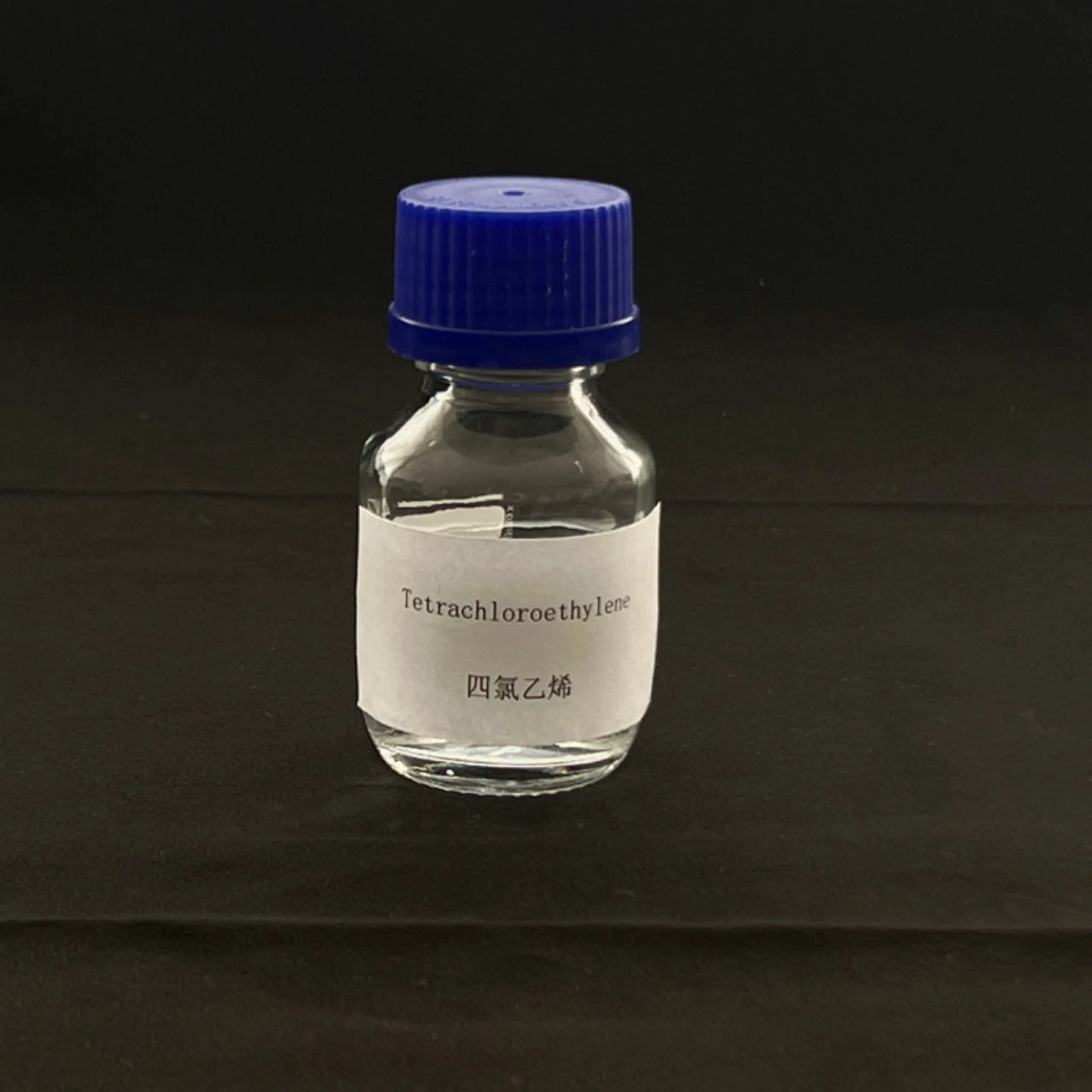Recommended storage and transportation practices for tetrachloroethylene (also known as perchloroethylene) include the following:
Storage:
Store tetrachloroethylene in a cool, dry, well-ventilated area away from direct sunlight, heat sources, and incompatible materials.
Ensure that storage containers are tightly sealed to prevent leaks or spills.
Store tetrachloroethylene in approved containers made of materials resistant to the chemical.
Keep the storage area clearly labeled with appropriate warning signs indicating the presence of tetrachloroethylene.
Use secondary containment measures, such as bunds or trays, to contain potential spills and leaks.
Separate tetrachloroethylene from incompatible substances, such as oxidizing agents and strong acids or bases.
Handling:
Wear appropriate personal protective equipment (PPE), including gloves, goggles, and chemical-resistant clothing, when handling tetrachloroethylene.
Avoid direct skin contact and inhalation of vapors by using proper handling techniques and working in well-ventilated areas.
Do not eat, drink, or smoke while handling tetrachloroethylene.
Use proper equipment, such as approved pumps or dispensing systems, to transfer tetrachloroethylene from one container to another.
Follow good hygiene practices, including regular handwashing, after handling tetrachloroethylene.
Transportation:
Comply with all applicable local, national, and international regulations and requirements for the transportation of hazardous chemicals, including tetrachloroethylene.
Ensure that containers used for transportation are properly labeled, leak-proof, and in compliance with relevant standards.
Secure the containers during transportation to prevent shifting or damage.
Use appropriate means of transportation, such as vehicles designed for the transport of hazardous materials.
Provide drivers with necessary training and information regarding the hazards and safe handling of tetrachloroethylene.
It’s important to consult specific guidelines and regulations set by relevant authorities and regulatory bodies in your region or country for detailed and up-to-date information on the proper storage and transportation practices for tetrachloroethylene.
What are the potential health hazards associated with tetrachloroethylene exposure?
Exposure to tetrachloroethylene (also known as perchloroethylene) can pose various health hazards. Here are some potential health effects associated with tetrachloroethylene exposure:
Inhalation: Inhalation of tetrachloroethylene vapors can lead to respiratory effects such as irritation of the nose, throat, and lungs. China Tetrachloroethylene manufacturer Prolonged or high-level exposure may cause dizziness, headaches, drowsiness, confusion, and in severe cases, loss of consciousness.
Skin Contact: Tetrachloroethylene can cause skin irritation, redness, and dryness. Prolonged or repeated skin contact may result in dermatitis or chemical burns.
Eye Contact: Contact with tetrachloroethylene can cause eye irritation, redness, tearing, and discomfort. Direct exposure to the eyes should be avoided as it may cause significant eye damage.
Central Nervous System Effects: Tetrachloroethylene is a central nervous system depressant. High levels of exposure, whether through inhalation or ingestion, can lead to neurological symptoms such as confusion, dizziness, impaired coordination, tremors, and in severe cases, seizures.
Liver and Kidney Damage: Prolonged or repeated exposure to tetrachloroethylene may have adverse effects on the liver and kidneys. It has been associated with liver dysfunction, hepatotoxicity, and nephrotoxicity.
Reproductive and Developmental Effects: Tetrachloroethylene exposure has been linked to reproductive system effects, including menstrual disorders in females and decreased fertility in males. It may also pose risks to the developing fetus, potentially causing developmental abnormalities.
Carcinogenicity: Tetrachloroethylene is classified as a possible human carcinogen by various regulatory agencies. Long-term or chronic exposure to high levels of tetrachloroethylene has been associated with an increased risk of certain cancers, such as kidney cancer and non-Hodgkin lymphoma.
It’s important to note that the severity of health effects can vary depending on the duration and intensity of exposure. Occupational settings, where tetrachloroethylene is commonly used, may carry higher risks of exposure. Proper safety measures, such as engineering controls, personal protective equipment, and adherence to regulations and guidelines, should be implemented to minimize exposure and protect against these potential health hazards.
